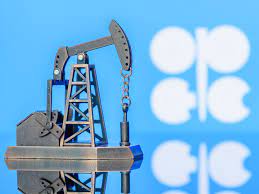Talk of $100 oil returned to the market this week following the Iranian attack against Israel that sparked fears of a widening conflict in the Middle East.
Analysts are not ruling out $100 oil in case of further escalation and even $130 oil if a broader conflict disrupts oil flows in the Strait of Hormuz, where around 21 million barrels per day (bpd) of oil pass from the top Middle Eastern exporters en route to global markets. That’s around a fifth of daily global petroleum consumption.
However, the market – while still on edge expecting a possible Israeli response to the Iranian attack – shrugged off the latest flare-up from this weekend, and oil prices eased amid rising U.S. stockpiles and the notion that we may be past peak escalation in the Middle East.
Analysts and traders had also largely priced in an Iranian retaliation for the Israeli hit on an Iranian diplomatic mission in Syria. They also are aware that OPEC+, which is once again firmly back in control of the oil market, is sitting on a spare capacity of about 5 million barrels per day (bpd) of oil production that can be returned gradually in case of severe tightness in markets and a surge in oil prices above $100 per barrel.
The OPEC+ group could influence oil prices by returning some of the 2 million bpd supply it is currently keeping off the market—unless, of course, the Strait of Hormuz is blocked for oil tanker traffic, which would cripple oil exports of all Middle Eastern producers, including Iran.
A major disruption in the Strait of Hormuz is a ‘low probability’ event, according to analysts.
As U.S. oil supply growth has slowed down, OPEC+ has regained influence over the market and could manage supply and oil prices more aggressively if it chooses to do so.
“It’s easier for OPEC and OPEC+ to be the 800-pound gorilla in the room, to be strong in this market,” Ann-Louise Hittle, vice president of oil markets at Wood Mackenzie, told The Wall Street Journal.
Still, analysts note that it would take further escalation in the Middle East with a direct threat to oil supply from the region for oil prices to spike to triple digits.
Currently, the market is pricing in a $5 to $10 a barrel war risk premium, and a de-escalation could lead to a pullback in oil prices. Fundamentals, however, point to a tight third quarter with a supply shortfall amid expected rising global oil demand in the summer. Even without the latest Iran-Israel flare-up, prices were expected to be in the high $80s and possibly above $90 a barrel this summer.
When Will OPEC+ Intervene?
Oil prices will continue to include a war risk premium in the short term, but a run-up to $100 oil would only follow another escalation, analysts and investment banks said this week.
“Oil prices are likely to reflect some of these risks with a geopolitical risk premium in the coming months, but we think we’d need to see meaningful escalation to see a pronounced spike to 2022 highs of $125 per barrel from today’s $90 per barrel,” JP Morgan said earlier this week.
According to the bank, the two key risks – a broader conflict and a transit disruption – “appear contained for now.”
“Iran’s own reliance on the Strait of Hormuz also makes its closure seem less likely – with severe consequences for its already struggling economy, as well as for Arab Gulf states broadly and China (Iran’s largest trading partner),” JP Morgan analysts wrote.
Ole Hansen, Head of Commodity Strategy at Saxo Bank, commented that “The risk of a disruption remains limited but in a worst-case scenario some of the short fall can be met by another release of oil from US Strategic Petroleum Reserves or key OPEC producers holding a significant amount of spare capacity, deciding to turn up the taps.”
OPEC+ has a meeting scheduled for early June to decide how to proceed with the current cuts and whether the market situation warrants an easing of the output reductions.
OPEC’s estimated 5-million-bpd spare capacity, most of which is in the Gulf producers Saudi Arabia, the United Arab Emirates (UAE), Iraq, and Kuwait, will deal with any supply disruption in the Middle East except a closure of the Strait of Hormuz, Warren Patterson, Head of Commodities Strategy at ING, wrote in an analysis on Wednesday.
“We believe the likelihood of Israel targeting energy infrastructure is rather small. This would not go down well with allies, given the impact it would have on oil prices,” Patterson said, referring to a possible Israeli response to the Iranian attack this weekend.
“OPEC spare capacity would be able to help the global market in the case of stricter sanctions against Iran or any significant supply disruption from Iran,” the strategist added.
Only a blockade of the Strait of Hormuz would prevent OPEC from bringing some of the spare capacity back to the market, Patterson noted.
But then, if this ‘low probability’ event were to happen, nothing could prevent the prices from spiking to record highs.
OPEC shouldn’t be too happy with triple-digit oil prices. First, oil at $100 a barrel or higher would boost the supply response from the United States and eat further into the cartel’s market share and long-term call on its crude. $100 oil will also trigger demand destruction and a spike in inflation that would push back interest rate cuts further down the line.

 Iran Energy News Oil, Gas, Petrochemical and Energy Field Specialized Channel
Iran Energy News Oil, Gas, Petrochemical and Energy Field Specialized Channel



